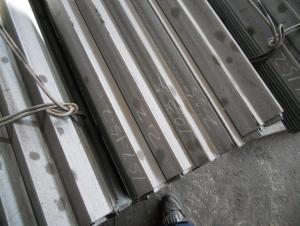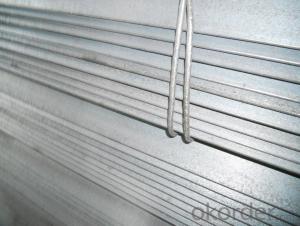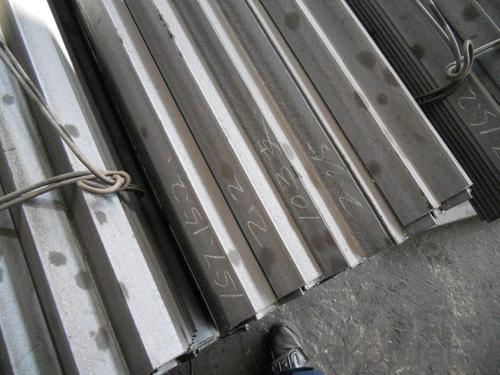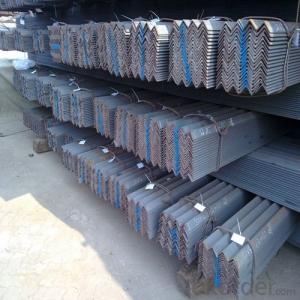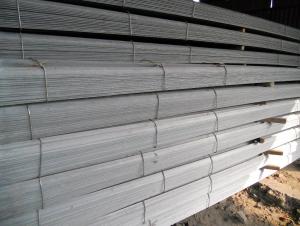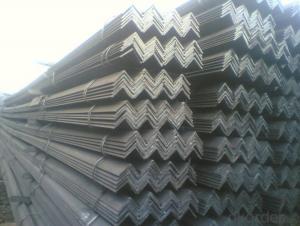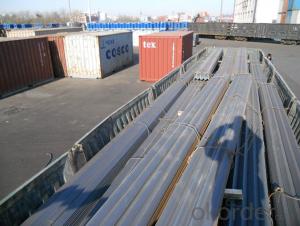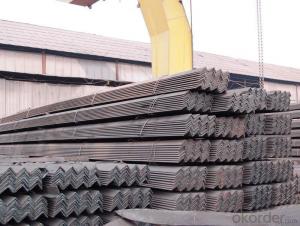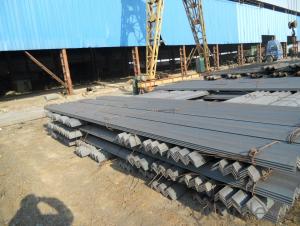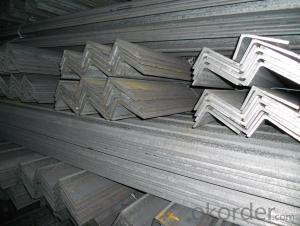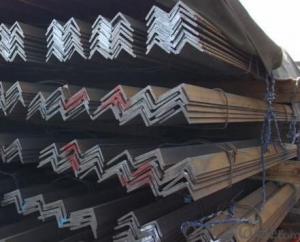Steel Angle Unequal Angle Made in China with High Quality for Construction
- Loading Port:
- China main port
- Payment Terms:
- TT OR LC
- Min Order Qty:
- 25 m.t.
- Supply Capability:
- 20000 m.t./month
OKorder Service Pledge
OKorder Financial Service
You Might Also Like
Specification
Product Description:
OKorder is offering Steel Angle Equal Angle with High Quality for Construction at great prices with worldwide shipping. Our supplier is a world-class manufacturer of steel, with our products utilized the world over. OKorder annually supplies products to European, North American and Asian markets. We provide quotations within 24 hours of receiving an inquiry and guarantee competitive prices.
Product Applications:
Steel Angle Unequal Angle Made in China with High Quality for Construction are ideal for structural applications and are widely used in the construction of buildings and bridges, and the manufacturing, petrochemical, and transportation industries.
Product Advantages:
OKorder's Steel Angle Unequal Angle Made in China with High Quality for Construction are durable, strong, and resist corrosion.
Main Product Features:
· Premium quality
· Prompt delivery & seaworthy packing (30 days after receiving deposit)
· Corrosion resistance
· Can be recycled and reused
· Mill test certification
· Professional Service
· Competitive pricing
Packaging & Delivery of Steel Angle Unequal Angle Made in China with High Quality for Construction:
Packaging Detail: products are packed in bundle and then shipped by container or bulk vessel, deformed bar is usually naked strapping delivery, when storing, please pay attention to moisture proof. The performance of rust will produce adverse effect.
Each bundle weight: 2-3MT, or as required
Payment term: TT or L/C
Delivery Detail: within 45 days after received advanced payment or LC.
Label: to be specified by customer, generally, each bundle has 1-2 labels
Trade terms: FOB, CFR, CIF
Images:
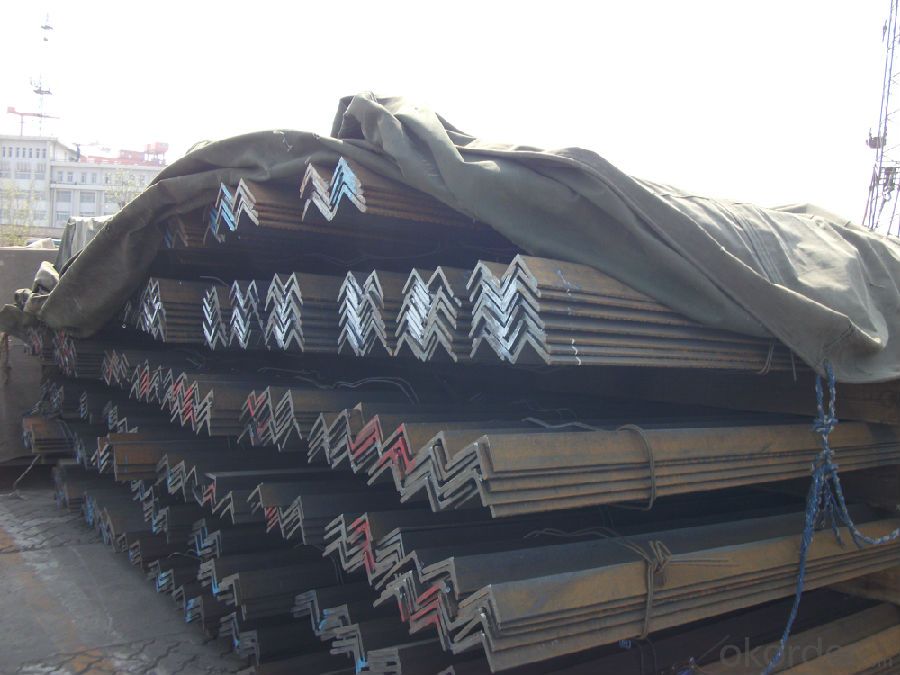
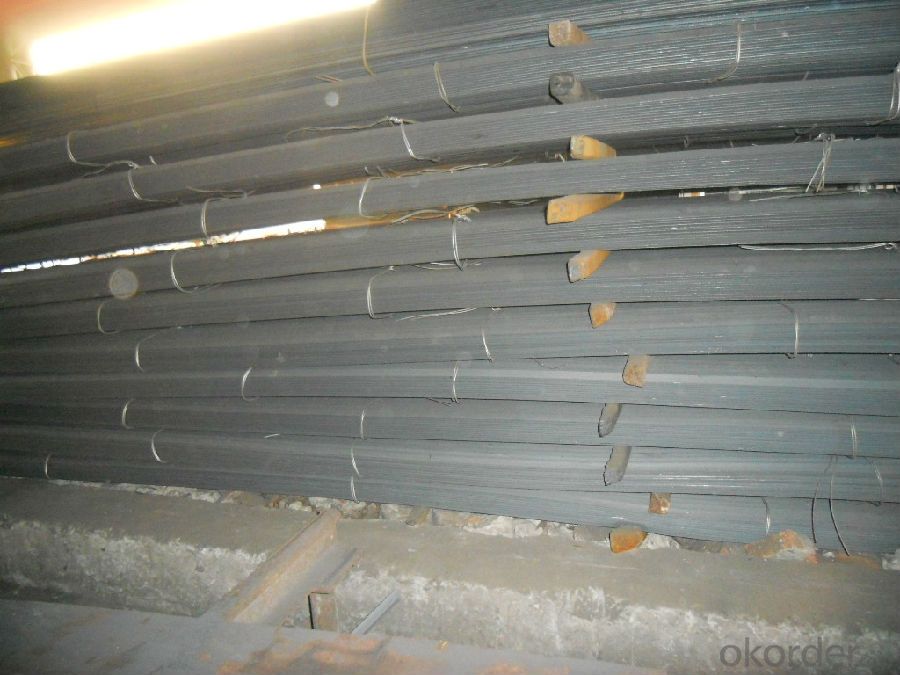
- Q: What are the standard sizes of steel angles?
- The standard sizes of steel angles vary, but some common sizes include 1/2 inch, 3/4 inch, 1 inch, 1-1/4 inch, and 1-1/2 inch.
- Q: Can steel angles be used as bracing elements in a structure?
- Yes, steel angles can be used as bracing elements in a structure. They are commonly used to provide stability and support to structural systems, especially in applications where lateral forces need to be resisted. Steel angles offer excellent strength and rigidity, making them suitable for bracing purposes in various construction projects.
- Q: What is the difference between galvanized steel bar and ordinary angle iron?
- Galvanized angle iron is divided into hot galvanized steel angle and cold galvanized steel angle. Galvanized steel galvanized or hot-dip galvanized steel angle is also called. Cold galvanized coating mainly through the electrochemical principle to ensure full contact between zinc powder and steel, resulting in electrode potential difference for corrosion protection.
- Q: Can steel angles be used in sports facilities or stadium constructions?
- Sports facilities and stadium constructions can make use of steel angles. These are widely utilized in the construction industry due to their versatility, strength, and durability. Steel angles serve various purposes in sports facilities or stadium constructions. One of the main uses of steel angles in sports facilities and stadium constructions is for framework and support structures. They are capable of creating seating areas, walkways, stairs, and entrances. Offering excellent structural support, they can withstand heavy loads, making them suitable for accommodating large crowds and ensuring the safety of spectators. Steel angles can also be employed in the construction of different sports equipment. For example, they can serve as the framework for basketball hoops, soccer goals, or volleyball nets. This ensures stability and durability during intense gameplay. Additionally, steel angles can be utilized for constructing fencing or barriers around sports fields or tracks, providing safety and security for players and spectators alike. Moreover, steel angles are commonly used in installing lighting systems in sports facilities and stadiums. They can be utilized to mount floodlights, scoreboards, or other necessary equipment for proper illumination during games or events. To conclude, steel angles play a vital role in sports facility and stadium constructions. Their strength, versatility, and durability make them a dependable choice for various applications, including framework and support structures, sports equipment, and lighting systems.
- Q: Can steel angles be used for outdoor applications?
- Yes, steel angles can be used for outdoor applications. Steel angles are typically made from weather-resistant materials such as stainless steel or galvanized steel, which makes them suitable for outdoor use. Their durability, strength, and resistance to corrosion make them a popular choice for various outdoor applications such as construction, fencing, and support structures.
- Q: How do you determine the required angle size for a specific load?
- To determine the required angle size for a specific load, several factors need to be considered. Firstly, the weight of the load must be determined. This can be done by measuring the mass of the object or by consulting relevant engineering specifications. Secondly, the angle of inclination or the slope at which the load will be placed needs to be known. The angle of inclination will affect the force exerted on the angle, as well as the stability of the load. Next, the type and material of the angle being used should be considered. Different materials have different load-bearing capacities, and the type of angle (e.g., steel, aluminum, or wood) will dictate the maximum load it can support. Additionally, the length of the angle and the number of supporting points should be taken into account. Longer angles may require additional support to distribute the load evenly and prevent bending or deformation. Once all these factors are determined, calculations can be made using engineering formulas and principles. These calculations will consider the weight of the load, the angle of inclination, and the material properties of the angle to determine the required angle size. It is important to note that when designing for safety, engineers usually include a factor of safety to ensure the angle can handle loads beyond the expected maximum. This factor accounts for variables such as dynamic loads, unforeseen circumstances, and wear and tear over time. In conclusion, determining the required angle size for a specific load involves considering the weight of the load, the angle of inclination, the material properties of the angle, the length of the angle, and the number of supporting points. Through calculations and incorporating a factor of safety, the appropriate angle size can be determined to ensure the load is supported safely and effectively.
- Q: Can steel angles be used for reinforcement bars?
- Steel angles cannot be used as reinforcement bars. Despite being made of steel, they possess different structural properties and serve different purposes. Reinforcement bars, or rebar, are specially designed to enhance the tensile strength and reinforcement of concrete structures. They have a ribbed or deformed surface that facilitates better bonding with the concrete. Conversely, steel angles are L-shaped structural components primarily employed for support and stability in construction endeavors. They are unsuitable for providing the necessary tensile strength and bonding required for concrete reinforcement. Hence, it is imperative to use the appropriate materials for their intended purposes to ensure the construction project's structural integrity and safety.
- Q: Can steel angles be used for stair stringers?
- Certainly, stair stringers can indeed utilize steel angles. Due to their robustness and resilience, steel angles are widely employed in the realm of construction. As stair stringers, steel angles provide the essential support and steadiness required for the stairs. They can be effortlessly trimmed and welded to the preferred shape and size, rendering them an adaptable choice for stair construction. Furthermore, steel angles possess resistance against decay, termites, and other types of harm, guaranteeing the durability of the stair structure. Nevertheless, it is imperative to seek guidance from a structural engineer or a professional contractor to ascertain that the steel angles conform to the specific criteria and weight-bearing capacity as per the intended stair design.
- Q: How do steel angles contribute to architectural design?
- Architectural design relies heavily on steel angles due to their ability to offer both structural stability and design flexibility. These angled steel profiles are commonly utilized in various construction projects, including buildings, bridges, and other structures, to provide support and reinforcement. A significant advantage of steel angles in architectural design lies in their capacity to enhance the structural integrity of a building. By creating rigid connections between different structural elements, these angles add strength and stability to the overall structure, enabling it to withstand different loads and forces. This is especially crucial in high-rise buildings or structures situated in areas prone to earthquakes or strong winds. Furthermore, steel angles empower architects and designers to create distinctive and innovative architectural features. Their versatility allows for the development of aesthetically pleasing designs, such as cantilevered balconies, intricate facades, and unique rooflines. Due to their ability to be easily manipulated and welded, steel angles are well-suited for complex geometric shapes and creative design concepts. Moreover, steel angles offer cost-effective solutions in architectural design. They are readily available in various sizes and lengths, making them easily obtainable and integratable into construction projects. Their durability and low-maintenance properties make them a long-lasting and economical choice for architects, reducing the need for frequent repairs or replacements. Additionally, steel angles contribute to sustainability in architectural design. Steel is a highly recyclable material, and incorporating steel angles into construction projects reduces the demand for new materials. Additionally, the lightweight nature of steel angles allows for efficient transportation, reducing carbon emissions during the construction process. In conclusion, steel angles are indispensable in modern architectural design due to their ability to provide structural support, design flexibility, cost-effectiveness, and sustainability. Their usage not only enhances the overall strength and stability of a structure but also enables architects to create visually appealing and unique designs. With their numerous benefits, steel angles have become an integral element in contemporary architectural design.
- Q: How are steel angles protected against abrasion?
- Steel angles are commonly used in construction and industrial applications, where they are subject to various forms of abrasion. To protect steel angles against abrasion, several methods are employed. One common method is the application of protective coatings. These coatings can be in the form of paints, epoxy coatings, or other specialized coatings designed for abrasion resistance. The coatings act as a barrier between the steel surface and the abrasive elements, preventing direct contact and reducing the wear and tear caused by friction. Another method is the use of rubber or plastic linings. These linings are typically applied to the surfaces of the steel angles that are most prone to abrasion. The rubber or plastic material absorbs the impact of abrasive forces, cushioning the steel and reducing the wear rate. Additionally, these linings provide an extra layer of protection against corrosion and chemical attacks. In some cases, steel angles may undergo a process called hardening or heat treatment. This involves subjecting the steel to high temperatures and then rapidly cooling it. This process alters the microstructure of the steel, making it harder and more resistant to abrasion. Heat-treated steel angles are commonly used in high-wear environments such as mining and material handling industries. Furthermore, engineers may opt to design steel angles with specific profiles or shapes that offer better resistance to abrasion. These profiles can include rounded edges, chamfers, or other features that minimize direct contact with abrasive materials. Overall, the protection against abrasion for steel angles involves a combination of protective coatings, linings, heat treatment, and thoughtful design. By implementing these measures, the lifespan and performance of steel angles can be significantly prolonged, reducing maintenance costs and ensuring their durability in abrasive environments.
Send your message to us
Steel Angle Unequal Angle Made in China with High Quality for Construction
- Loading Port:
- China main port
- Payment Terms:
- TT OR LC
- Min Order Qty:
- 25 m.t.
- Supply Capability:
- 20000 m.t./month
OKorder Service Pledge
OKorder Financial Service
Similar products
Hot products
Hot Searches
Related keywords
